
How Shadow IT Transformed the Role of the CIO
 New Direction
New Direction
85% of CIOs and other senior IT decision-makers surveyed said the traditional role of the CIO is changing.
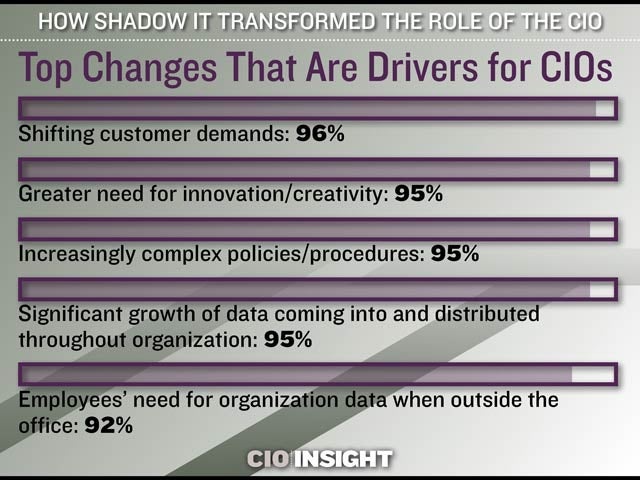 Top Changes That Are Drivers for CIOs
Top Changes That Are Drivers for CIOs
Shifting customer demands: 96%, Greater need for innovation/creativity: 95%, Increasingly complex policies/procedures: 95%, Significant growth of data coming into and distributed throughout organization: 95%, Employees’ need for organization data when outside the office: 92%
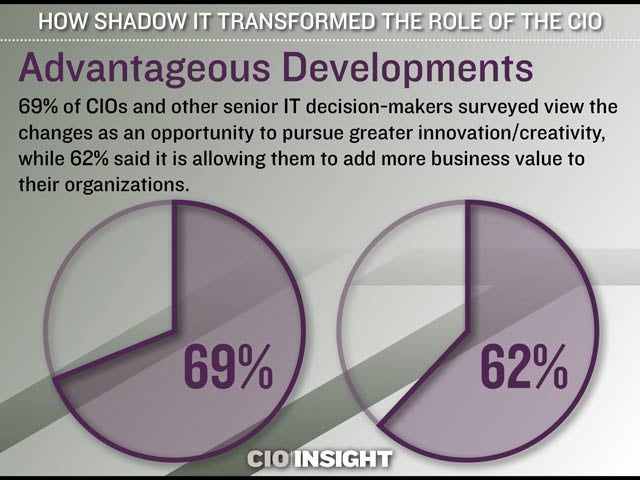 Advantageous Developments
Advantageous Developments
69% of CIOs and other senior IT decision-makers surveyed view the changes as an opportunity to pursue greater innovation/creativity, while 62% said it is allowing them to add more business value to their organizations.
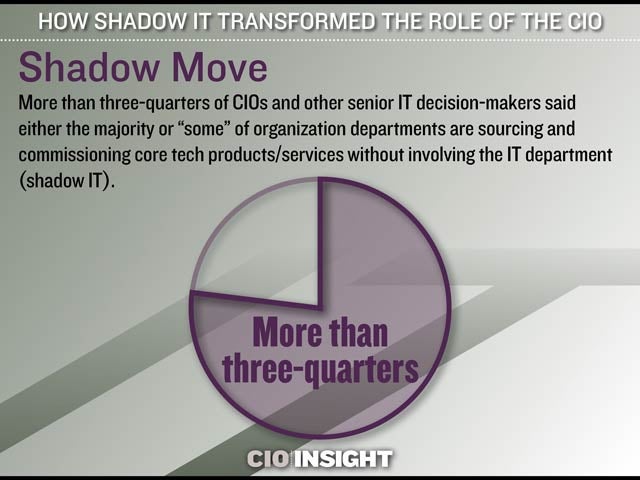 Shadow Move
Shadow Move
More than three-quarters of CIOs and other senior IT decision-makers said either the majority or “some” of organization departments are sourcing and commissioning core tech products/services without involving the IT department (shadow IT).
 Biggest Concerns About Shadow IT for CIOs
Biggest Concerns About Shadow IT for CIOs
Impact on organization’s data security: 75%, Effect on organization’s IT infrastructure security: 73%, Impact on app performance: 71%, Duplication of efforts/resources throughout departments: 70%
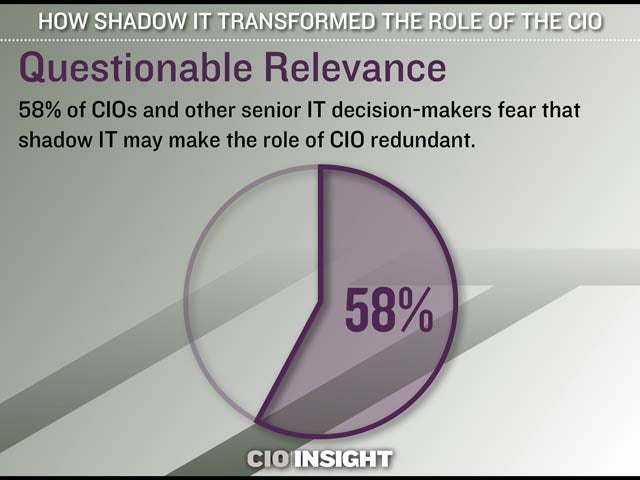 Questionable Relevance
Questionable Relevance
58% of CIOs and other senior IT decision-makers fear that shadow IT may make the role of CIO redundant.
 Strategic Focus
Strategic Focus
81% said the CIO “owns” more business-focused Key Performance Indicators (KPIs) than tech ones, compared to two years ago.
 Game-Changers
Game-Changers
Two-thirds said that trends within mobility and unified communications provide to them a critical way to deliver real business results, while 64% cite the cloud.
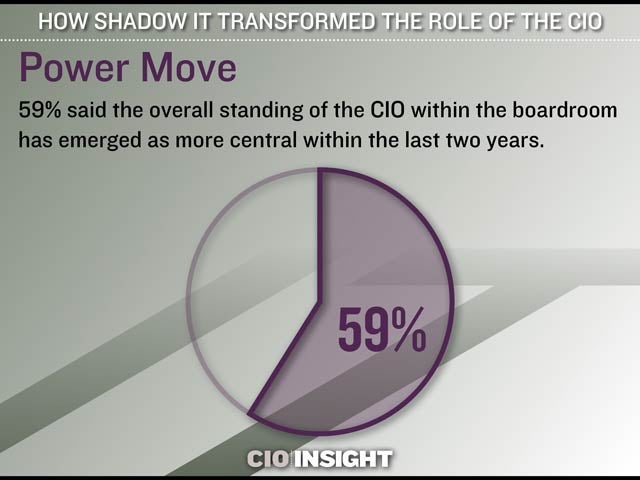 Power Move
Power Move
59% said the overall standing of the CIO within the boardroom has emerged as more central within the last two years.
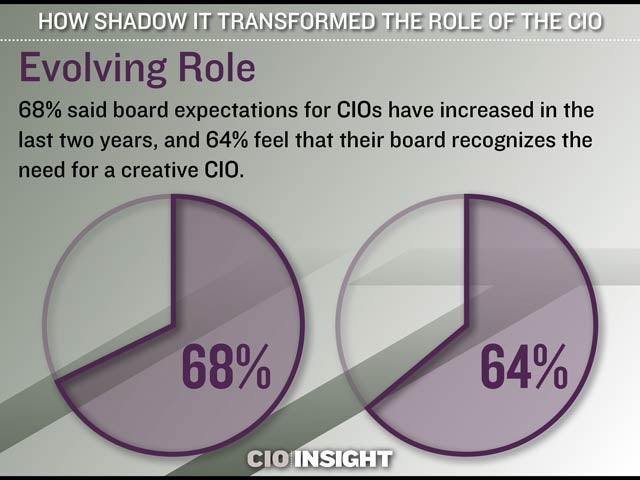 Evolving Role
Evolving Role
68% said board expectations for CIOs have increased in the last two years, and 64% feel that their board recognizes the need for a creative CIO.